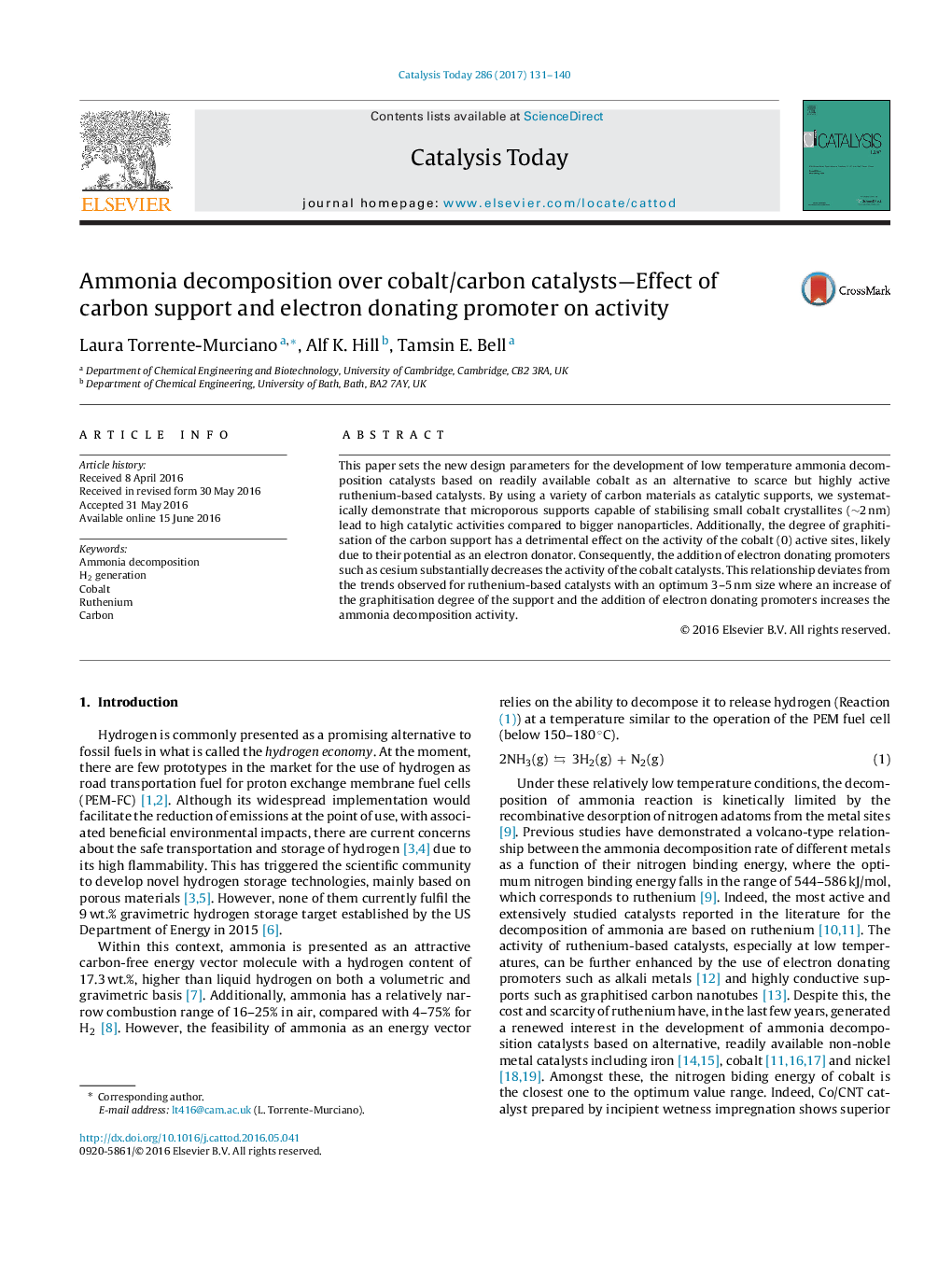| Article ID | Journal | Published Year | Pages | File Type |
|---|---|---|---|---|
| 6455305 | Catalysis Today | 2017 | 10 Pages |
â¢Highly dispersed â¼2 nm cobalt nanoparticles are highly active for ammonia decomposition.â¢Increasing the degree of graphitisation of the carbon support decreases the catalytic activity of cobalt.â¢The addition of electron donating promoters has no or detrimental effect on activity of cobalt.â¢The observations herein oppose those reported for ruthenium-based systems.
This paper sets the new design parameters for the development of low temperature ammonia decomposition catalysts based on readily available cobalt as an alternative to scarce but highly active ruthenium-based catalysts. By using a variety of carbon materials as catalytic supports, we systematically demonstrate that microporous supports capable of stabilising small cobalt crystallites (â¼2Â nm) lead to high catalytic activities compared to bigger nanoparticles. Additionally, the degree of graphitisation of the carbon support has a detrimental effect on the activity of the cobalt (0) active sites, likely due to their potential as an electron donator. Consequently, the addition of electron donating promoters such as cesium substantially decreases the activity of the cobalt catalysts. This relationship deviates from the trends observed for ruthenium-based catalysts with an optimum 3-5Â nm size where an increase of the graphitisation degree of the support and the addition of electron donating promoters increases the ammonia decomposition activity.
Graphical abstractDownload high-res image (108KB)Download full-size image
